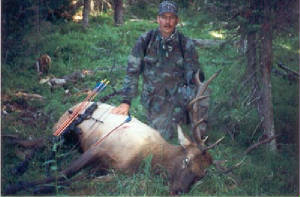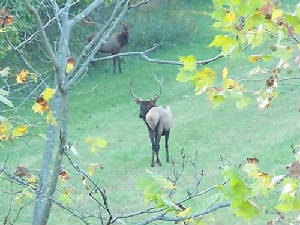|



Elk hunting requires stamina and physical conditioning, no matter where you hunt them. If you go out West, there is also altitude
to deal with. Unless you choose to go the guide or outfitter route, you will have to do a lot of homework long before time
to hunt. It is virtually impossible to scout your hunting area if you live in another state. There is plenty of Public Land
to hunt on, but will be more crowded than private land. Many elk are taken each year on public land by hunters that go the
do-it-yourself way.
Bowhunters have the advantage of being able to
hunt early, therefore getting the best opportunity to catch the "rut", which begins in September and runs into October,
depending on where one hunts.
Todays elk are a lot smarter than 20-30 years ago.
They have been hunted harder and have become aware of the elk calls that are being used by todays hunters. However, They can
still be taken with some smart hunters and using tactics that they are not used too. The best way to locate elk when in the
field is by listening for a bull thats bugleing. Nearly all herd bulls had rather run than fight.
I prefer to locate the bulls with a bugle, then try to get in close. Then I rather
use cow and calf calls, to try to trick the bulls.
Below is some of
the equipment you will need to go elk hunting. There are more but you need to choose what you want. Remember, weight may be
a problem with too many items.Like bows and arrows and guns and bullets, personnel preference is up to you. These are some
of mine:
A map of the area is of course essential and a good compass(or 2), or a GPS is a given. Without those items, you are at risk
of getting lost if you are not familuar with the area you are hunting.
|




